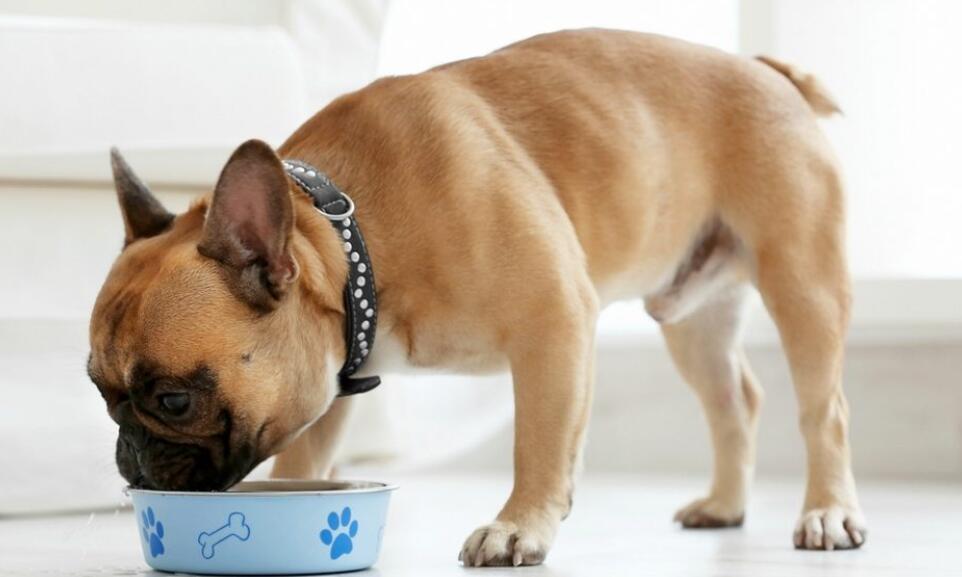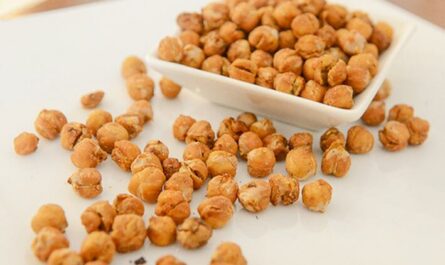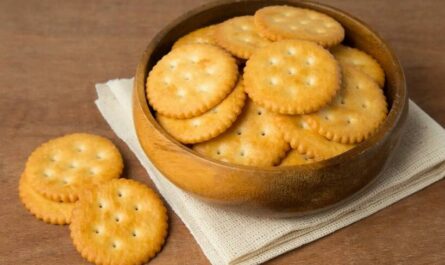Bringing a new puppy home is an exciting time! As a new pet parent, you want to be sure you’re giving your furry friend the best care and nutrition during these critical early months. One of the most common questions new owners have is “When can puppies start eating dry food?” The answer depends on each puppy, but generally, puppies can begin eating dry kibble around 8-12 weeks old. In this guide, we’ll cover everything you need to know about feeding puppies dry dog food.
What is Dry Dog Food?
Dry dog food, also known as kibble, is a processed dog food made by combining meat or meat by-products with grain, vegetable, and supplement ingredients and then extruding the mixture into the small, dry pellets that make up kibble.
Manufacturers create kibble through an extrusion process where ingredients are blended, cooked under high heat and pressure, pushed through a die to form small bite-sized pieces, and then dried. This process helps sterilize ingredients and kill potential pathogens. It also mixes components evenly while still retaining much of the ingredients’ nutritional value.
Benefits of feeding puppies dry kibble include:
- Convenience: Dry food is shelf-stable and easy to portion out and feed
- Dental health: The crunchy texture helps clean puppy teeth
- Budget-friendly: Dry food tends to cost less per pound compared to wet food or fresh food
Downsides can include:
- Lack of moisture: Does not provide much hydration, so extra water should be supplied
- Digestibility: Some ingredients may be less bioavailable or harder to digest
When scanning ingredient labels look for quality sources of protein (whole meats rather than by-products or meals), whole grains rather than refined grains, fruits and vegetables for micronutrients, and supplements like DHA for brain development. AAFCO certification also helps ensure proper nutritional standards.
Signs Your Puppy is Ready for Dry Food
How do you know when the time is right to start offering an introduction to solid foods like dry kibble? Watch for these indicators that your puppy is developmentally ready:
Teeth coming in: Those sharp little puppy teeth help them start properly chewing kibble
Improved chewing coordination: Puppies should be able to deliberately chew, not just suckle and swallow Increased curiosity: Counter surfing, sniffing your food, and food stealing are signs puppies are ready to explore new tastes and textures
Age Guideline for Dry Food Introduction
Use this age chart as a general guideline for when most puppies can begin eating dry dog food:
- 3-4 weeks: Can present dry kibble soaked in warm water or formula, but won’t eat much
- 4-6 weeks: Start transitioning from sole milk or formula feeding to a combo of both plus soaked kibble
- 8-12 weeks: Offer dry kibble several times per day along with supplemental water and liquids
- 12+ weeks: Feed complete and balanced dry puppy food exclusively
Remember these ages are just averages – factors like breed size may shift timelines earlier or later, so work closely with your veterinarian.
For example, some large breed puppies may start dry food introduction slightly later to control rapid growth, while small breeds with fewer nutritional storage reserves may need to start the weaning process a little sooner. Get individualized guidance from your vet.

Transitioning Tips When Introducing Dry Food
Switching a puppy from liquid feeding to dry kibble requires some patience. Follow these tips to help ease the transition to dry food:
- Start with a small amount of kibble (1-2 tablespoons) soaked in warm water or formula to soften and enhance palatability
- Over days or weeks, slowly decrease added moisture and increase kibble volume and texture
- If you notice vomiting, diarrhea, excess gas, or loss of appetite, slow transition and consult your vet
- Make diet changes gradually always, allowing the puppy’s digestive system to comfortably adapt
The key is taking it slowly and letting the gastrointestinal system and mouth/teeth conditioning adjust before progressing. Be sure to continue providing a separate bowl of fresh, clean water at all times to support hydration and nutrition needs.
How Much Dry Food Do Puppies Need?
Determining the right daily feeding guidelines for dry puppy food depends primarily on two factors:
1. Age
Caloric needs shift dramatically during the rapid growth phase of puppyhood. Follow label guidelines or these general rules:
- 8-12 weeks old: Feed 4 scheduled meals per day
- 3-6 months old: Feed 3 scheduled meals per day
- 6-12 months old: Feed 2 scheduled meals per day
2. Size
Larger breed puppies need more total calories than smaller breeds. Here are some baseline recommendations:
- Small breed (5-15 lbs adult weight): 1/2 to 1 cup per day total
- Medium breed (15-50 lbs): 1 to 2 cups per day total
- Large/giant breed (50+ lbs): 2+ cups per day total
These are just general guidelines – your puppy’s unique activity level and metabolism also impact exact needs. Splitting up daily calories into multiple smaller meals supports healthy growth better than one large meal. Monitor puppy body condition and adjust amounts gradually if needed.
3. Feeding Amount Guidelines by Weight
The amount you should feed your puppy depends on their age, breed, activity level, and other factors. Generally, most puppy food packaging provides feeding charts based on expected weight.
Here are some general puppy feeding guidelines for dry kibble based on weight, but remember to start slowly and tweak as needed for your individual pup.
| Puppy Weight | 8-12 weeks | 3-6 months |
|---|---|---|
| 5 lbs | 1⁄2 cup | 3⁄4 cup |
| 10 lbs | 3⁄4 cup | 1 1⁄4 cups |
| 20 lbs | 1 1⁄4 cups | 2 cups |
| 30 lbs | 1 3⁄4 cups | 2 3⁄4 cups |
| 40 lbs | 2 1⁄4 cups | 3 1⁄2 cups |
| 50 lbs | 2 3⁄4 cups | 4 cups |
These amounts represent total daily rations – so divide them into smaller, frequent meals based on age.
How do you feed your dogs dry food safely?
1. Feeding Schedules
In addition to proper portion sizes, developing a consistent feeding schedule is key to providing good nutrition for puppy growth and development. Puppies under 6 months should be fed at least twice a day, and more frequently for very young pups.
Create a consistent daily routine for feedings rather than leaving food out at all times (free feeding is not recommended). Feed at the same times each day whenever possible – for example, 7 AM and 5 PM. For younger puppies, add in a mid-day feeding as well.
Use measured scoops of food for each meal and pick up uneaten food within 15-20 minutes until the next scheduled feeding. This helps promote proper nutrition and makes it easier to monitor food intake.
2. Portion Control
Carefully measuring out the proper serving size for your puppy is key. Overfeeding can lead to obesity and developmental issues while underfeeding leads to nutritional deficits. Here are some tips:
- Weigh out food rather than estimating by sight or volume measures
- Start with baseline amounts from the label or veterinarian then tweak as needed
- Assess body condition score regularly – you should be able to faintly feel ribs
- Track growth metrics like weight changes over time
- Compared to expected adult size – larger breeds eat more than small breeds
Portion control sets your puppy up for better long-term health by preventing weight problems. Your vet can help advise on optimal amounts tailored to your puppy. Consider investing in a pet food scale for easy tracking.
3. Choosing a High-Quality Puppy Dry Food
The quality of the ingredients matters when it comes to puppy food formulas designed to support growth and development. Here’s what to look for on the label:
- First Ingredients: Whole or named meat proteins (chicken, lamb, etc) rather than non-specific meat meals or by-products
- Grains: Whole grains or grain-free formulas, avoid corn, wheat, soy
- Fruits/Veggies: For added vitamins, minerals and antioxidants
- Supplements: DHA for brain development, glucosamine for joints, probiotics, etc
Reputable food brands that meet quality standards are Purina Pro Plan, Hill’s Science Diet, Royal Canin, Orijen, Blue Buffalo, Wellness, and more. Check the label for AAFCO certification. Consider your budget and your pup’s unique nutritional needs when deciding on the best food.
4. Ingredient Considerations
With so many puppy food options on the market, it can get overwhelming trying to parse labels. Here are some key things to look for:
- Whole Protein Sources: Meat, fish, and eggs rather than non-specific by-products or meals
- Digestibility: Source of carbs/fiber impacts how well nutrients are absorbed
- Allergy Risk: Some dogs have sensitivities to common proteins or grains
- Supplements: Vitamins, fatty acids, glucosamine etc provide added benefits
Things to avoid include artificial preservatives like BHA, BHT, or ethoxyquin, artificial colors, artificial flavors, excess vitamin A, and propylene glycol. Reading reviews from other pet parents can help assess the potential benefits or risks of specific ingredients in a formula.
5. Supplements and Mix-ins for Dry Food
To add some supplemental nutrition and hydration to dry kibble, consider adding mix-ins like:
- Wet food: Adds moisture and flavor variety
- Broths: Low-sodium chicken or beef broth poured over food
- Fruits/veggies: Fresh or frozen fruits and vegetables
- Eggs: Cooked eggs are highly digestible protein
- Yogurt: Probiotic boost with live cultures
- Oils: Omega fatty acid support from fish oil, coconut oil, etc
When adding any human food to a puppy’s diet be mindful of choking risks from bones or tough textures. Introduce new foods slowly one at a time.
6. Weaning Off Puppy Food to Adult Food
Around 12 months of age, most puppies should start the transition from puppy to adult dog food formulas. Here are some tips for a smooth switch:
- Slowly mix increasing amounts of new food with current food over 5-7 days
- Keep an eye out for digestive upset and slow transition if needed
- Factor in energy needs based on activity level, breed size, health status etc when choosing an adult formula
- Consider your budget – premium foods may provide better nutrition but cost more
Look for similar high-quality ingredients but tailored for maintenance rather than rapid growth. An adult food formula reduces calories while still delivering complete, balanced nutrition.
7. Monitoring Food Transitions
When making any diet change for your puppy – whether transitioning to dry food from milk, switching between puppy formulas, or weaning to adult food – be sure to monitor closely for signs of digestive upset. Noticeable changes could include:
- Decreased appetite or refusal to eat
- Vomiting
- Diarrhea
- Excess gas or abdominal pain
- Changes in energy level or behavior
If you observe these indicators of discomfort, try slowing down the transition by mixing more of the previous food back in. Check with your veterinarian if symptoms persist beyond a day or two, as nutritional adjustments or medications may be needed.
Other Questions
Q: Can I soften dry puppy food with milk instead of water?
A: No, you should not use milk products to soften puppy kibble once they are weaned. The lactose can cause digestive upset. Use a non-dairy liquid like water or broth instead.
Q: Is it okay to leave dry food out all day for free feeding?
A: Free feeding is not recommended for puppies. Instead, offer measured meals 2-4 times per day based on age. This helps ensure proper nutrition and makes it easier to monitor food intake.
Q: What is the best puppy food brand?
A: There are many excellent puppy food brands to choose from including Royal Canin, Hill’s Science Diet, Purina Pro Plan, Orijen, Wellness, Blue Buffalo, etc. Consider your budget and unique nutritional needs. Checking for AAFCO certification on the label is important.
Q: Can I make homemade puppy food instead?
A: It is possible but challenging to formulate a complete and balanced homemade diet. Unless you work with a veterinary nutritionist, it is safest to choose a high-quality commercial puppy formula that meets AAFCO standards.
Q: How long should I wait between puppy feedings?
A: For young puppies under 12 weeks, leave at least 2 hours between meals. From 3-6 months aim for a 4-6 hour gap. Give at least 8 hours between meals for puppies over 6 months old.
Q: My puppy prefers wet food – is dry food still important?
A: It can be fine to mix wet and dry food or primarily feed wet food. But including some dry kibble in your puppy’s diet provides teeth-cleaning benefits and enhances jaw strength.
Q: Can puppies eat the same food brand long term?
A: Yes, you can safely feed the same puppy food brand long-term as long as your dog continues to do well on it. Sticking to one formula avoids unnecessary transitions. Monitor health and adjust if any issues emerge.





